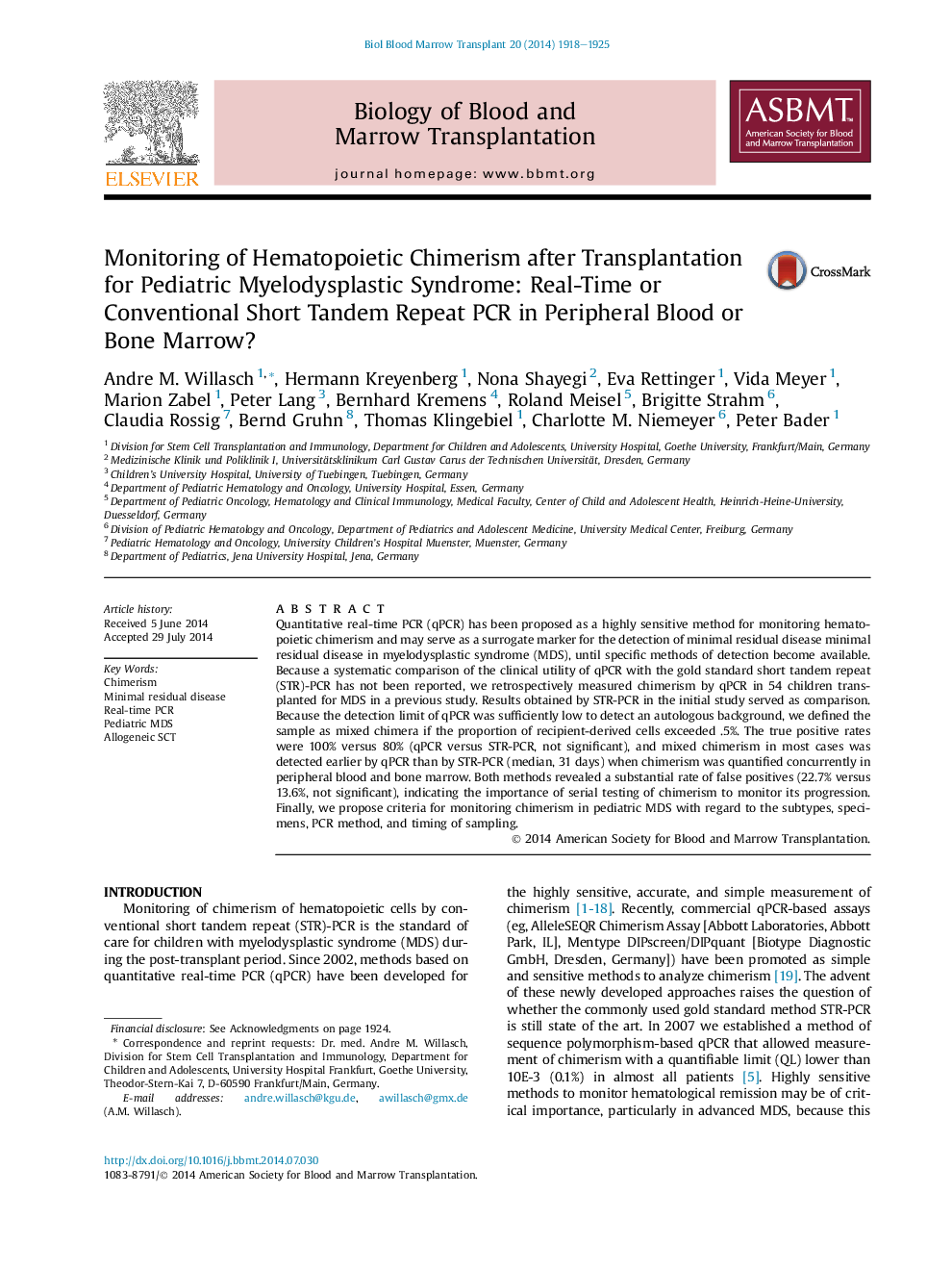| کد مقاله | کد نشریه | سال انتشار | مقاله انگلیسی | نسخه تمام متن |
|---|---|---|---|---|
| 2103495 | 1546273 | 2014 | 8 صفحه PDF | دانلود رایگان |

• Real-time and STR-PCR ensured sensitive monitoring of chimerism in children with MDS.
• Mixed chimerism was detected earlier by real-time PCR (median 31 days).
• Mixed chimerism in patients, who never relapsed, occurred in both methods.
• Currently STR-PCR is proposed for monitoring of chimerism in RCC and advanced MDS.
• Benefit of high sensitive real-time PCR needs to be shown in prospective trials.
Quantitative real-time PCR (qPCR) has been proposed as a highly sensitive method for monitoring hematopoietic chimerism and may serve as a surrogate marker for the detection of minimal residual disease minimal residual disease in myelodysplastic syndrome (MDS), until specific methods of detection become available. Because a systematic comparison of the clinical utility of qPCR with the gold standard short tandem repeat (STR)-PCR has not been reported, we retrospectively measured chimerism by qPCR in 54 children transplanted for MDS in a previous study. Results obtained by STR-PCR in the initial study served as comparison. Because the detection limit of qPCR was sufficiently low to detect an autologous background, we defined the sample as mixed chimera if the proportion of recipient-derived cells exceeded .5%. The true positive rates were 100% versus 80% (qPCR versus STR-PCR, not significant), and mixed chimerism in most cases was detected earlier by qPCR than by STR-PCR (median, 31 days) when chimerism was quantified concurrently in peripheral blood and bone marrow. Both methods revealed a substantial rate of false positives (22.7% versus 13.6%, not significant), indicating the importance of serial testing of chimerism to monitor its progression. Finally, we propose criteria for monitoring chimerism in pediatric MDS with regard to the subtypes, specimens, PCR method, and timing of sampling.
Journal: - Volume 20, Issue 12, December 2014, Pages 1918–1925